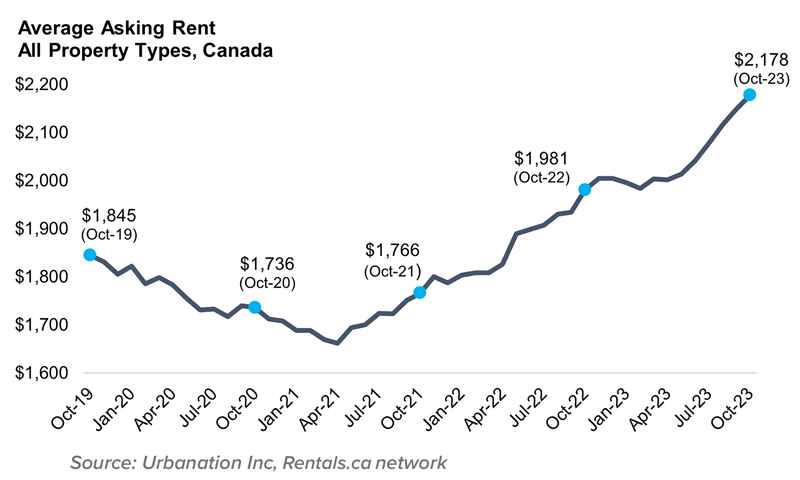Canada’s banking regulator confirmed today that it will no longer pursue at least several of the proposed mortgage regulations it had introduced earlier this year after they were met with widespread concern and criticism during its public consultation period.
Nine months after the Office of the Superintendent of Financial Institutions (OSFI) unveiled its proposed measure related to debt serviceability and kicked off a public consultation period, the regulator today released the results of its discussions with industry stakeholders.
“The majority of stakeholders agreed that risks to lenders arising from high household indebtedness are important,” OSFI concluded in a report published today. “However, stakeholders were generally not supportive of additional debt serviceability measures.”
Respondents warned that OSFI’s latest proposed measures would have a disproportionate effect on smaller institutions with unique business models and wouldn’t adequately address the root cause of Canada’s household debt problem.
However, OSFI confirmed that it would no longer pursue two of its proposals at this time: debt-to-income (DTI) restrictions (while keeping LTI restrictions on the table) and debt service loan coverage restrictions.
While these comments were included in OSFI’s consultation feedback report, it hasn’t yet made final decisions in terms of the implementation of its remaining proposals.
In January, OSFI asked the public for feedback on three new regulatory changes to Guideline B-20 which were intended to restrict mortgage lending in response to record levels of household indebtedness.
Stakeholders expressed concerns over the proposed changes
The proposals included loan-to-income (LTI) and debt-to-income (DTI) restrictions, debt service coverage restrictions and more “risk-sensitive” interest rate affordability stress tests.
The following is the feedback OSFI received in response to each proposal.
Loan-to-income (LTI) and debt-to-income (DTI) restrictions
Specifically, the proposed LTI and DTI restrictions would limit lenders to a certain volume of loans that exceed a “prudent” threshold “to help financial institutions better manage the risks associated with significant buildups of household debt in their loan books,” according to OSFI’s Annual Risk Outlook semi-annual update. This would effectively cap 75% of all mortgage customers to loan amounts of up to 450% of their income.
According to the feedback published on Monday, respondents were generally not supportive of the measure, suggesting some would be redundant, too late to implement effectively and would disproportionately impact smaller lenders.
OSFI’s response:
“We consider a DTI (total indebtedness) restriction to be too complex to implement at this time,” it said in the report.
“We agree that debt service ratios (i.e., GDS and TDS), under certain conditions, can produce similar outcomes to LTI/DTI although they are focused on debt affordability as opposed to limiting exposure to high indebtedness. We also acknowledge that most lenders do not use LTI/DTI measures in underwriting,” it added. “We also believe proportional implementation, versus a one-size-fits-all approach, would be most appropriate given differences in FRFIs’ business models.”
“We appreciated lenders’ analysis on predictors of default and agree that credit score and other factors can be better predictors than high LTI or DTI,” OSFI noted. “That said, high household indebtedness is still relevant to credit risk, the safety and soundness of FRFIs, and the overall stability of the financial system.”
Debt-service coverage restrictions
This would involve measures that restrict ongoing debt service (principal, interest and other related expenses) obligations as a percentage of borrower income.
Respondents expressed “mixed views,” with some supporting a qualifying amortization limit but most expressing opposition to regulatory limits and alignment with insured mortgage criteria. Instead, the feedback found strong support to preserve the lender-determined risk-based limits and criteria for debt service coverage.
OSFI’s response:
“We believe there is merit in lenders applying an explicit, qualifying amortization limit and we will continue to evaluate this proposal,” OSFI said. “Such a limit would add more rigour to qualifying debt service calculations while still permitting lenders flexibility to offer a longer contractual amortization to some qualified borrowers.”
However, OSFI added that “After careful consideration of stakeholder feedback, we agree that regulatory limits on debt service coverage should not be pursued. While such limits could result in greater consistency, they would remove too much risk-based decision-making and risk ownership from lenders.
Interest rate affordability stress test
This measure would impose a more “risk-sensitive” test beyond the current Minimum Qualifying Rate (currently 5.25%), including implementing different MRQs for different product types, such as mortgage terms.
Respondents were similarly opposed to MQR adaptations and other affordability tests, specifically due to the negative effect on other public policy objectives and concerns over unintended consequences.
OSFI adds that any regulatory measures it considers would be implemented “incrementally and sequentially” with debt service coverage measures taking the priority, followed by adjustments to the MRQ, with an LTI limit as a last resort.
OSFI’s response:
“We will continue to reflect on how best to encourage lenders to apply more rigorous affordability tests, especially when higher risk attributes are present in a mortgage application. We should be able to observe variation in qualifying debt service ratios as evidence of this,” OSFI said.
“Encouraging longer borrowing terms and payment stability through MQR design has merit from a risk perspective.”
Other feedback
In addition to feedback specifically on the three proposals, respondents also commented on the importance of improved income verification in deterring mortgage misrepresentation.
They suggested that OSFI could work with the Canada Revenue Agency (CRA) to allow independent income verification, something Mortgage Professionals Canada has identified as a priority as part of its advocacy initiatives.
“We welcome any initiative that advances our B-20 expectation that FRFIs use income sources that are independently verifiable and difficult to falsify. We and our federal financial sector partners are aware of ongoing CRA efforts in this regard,” OSFI said.
Respondents also encouraged a focus on higher risk markets like the Greater Toronto and Vancouver markets, though OSFI said it’s against any geography-based measures, as vulnerabilities and risks are common regardless of geography.
At the end of the day, OSFI agrees with other industry watchers in acknowledging the only real way to address Canada’s housing affordability crisis is by addressing supply shortages.
“We believe that housing market imbalances are driven by both demand and supply-side factors,” the report states. “Adequate housing supply that keeps pace with demographic needs supports a stable, well-functioning mortgage market and the broader Canadian economy.”








